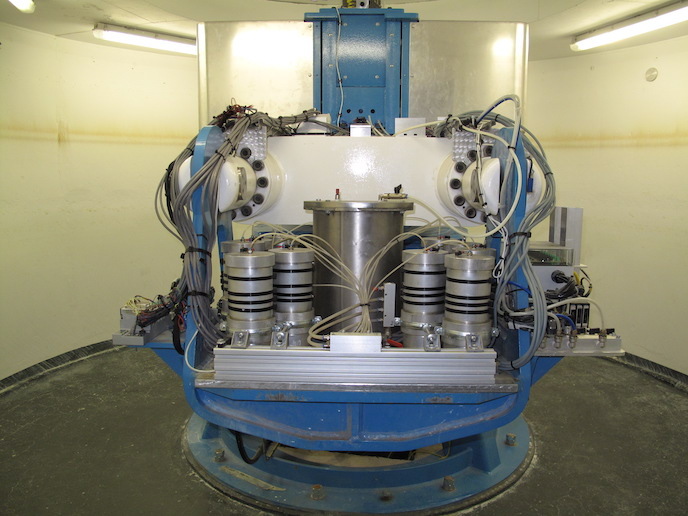What spinning trash in a large centrifuge can tell us about waste management
The average EU citizen produces half a tonne of waste every year, most of which ends up in landfill(opens in new window). There, waste breaks down and can mix with rainwater to produce a fluid called leachate, which can escape to contaminate the ground and water supplies(opens in new window). The HARM(opens in new window) project, led by environmental researcher Mercedes Regadío(opens in new window), focussed on the use of ash and construction waste mixed with clays to build sustainable barriers for these waste disposal sites. The work was carried out at the University of Sheffield(opens in new window), United Kingdom (UK), in collaboration with researchers Steven Thornton and Jonathan Black.
An unsolved problem
“I was always an environmentally conscious person, when I was young I joined in any activity for cleaning beaches, planting trees and marking pathways in natural parks,” says Regadío. “I think waste is one of the problems we’ve had to deal with for a long time and we still don’t have the solution.” In affluent countries, the typical solution is to isolate waste within engineered barrier systems. “But this is not very sustainable, because the barriers may fail after a few years, releasing the pollutants,” adds Regadío. “On the other hand, low-income countries cannot afford these barriers, and these countries are where most of the waste goes to landfill.”
100-year plan
To construct a cheap, sustainable, long-term barrier, Regadío experimented with clays mixed with construction waste, or ash from biomass plants – materials with little to no economic value. As well as immobilising pollutants in the leachate, the materials react with the contaminants chemically to neutralise hazardous waste over time. “A landfill is normally used until it is full, but the liquid leachate can be an issue many decades after closing the landfill, so the barrier systems may have to work for over 100 years,” notes Regadío. To simulate these time frames, she turned to a 4-metre-wide centrifuge in the Centre for Energy & Infrastructure Ground Research(opens in new window). The experimental barrier materials were prepared in 10 cm diameter tubes, fitted to the centrifuge platform, and spun at approximately 100 revolutions per minute. “This accelerates the pollutant transportation processes in the soil,” she explains. “So I could reproduce what happens over a time period of 30 years in just 2.5 weeks.”
Waste injection
To simulate realistic conditions, carbon dioxide gas and leachate sourced from a UK domestic waste site were continuously injected into the tubes during the spinning. As well as determining the effectiveness of the different barrier mixtures, Regadío discovered that the very high pH of the ash was lowered by chemicals in the waste, demonstrating the complex geochemistry of landfills. Data from Regadío’s experiments will help develop guidelines for the design of landfill barriers. The work was supported by the Marie Skłodowska-Curie Actions programme. “Without this funding, I just could not have done this research,” she says. “It was an opportunity to network with researchers from other countries, improve my knowledge and skills, and discover new interests as well.”







